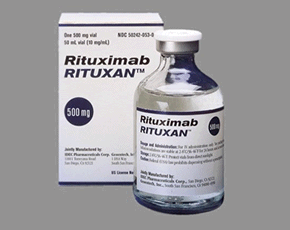
The dosage of rituximab commonly used in clinical practice (1000 mg infused twice, separated by two weeks) is largely empirically based. It is unclear whether lower doses will result in reduced efficacy or improved safety. Here, Emery et al (Ann Rheum Dis 2010; 69: 1629) explore patient outcomes in RA patients treated with 2 x 500 vs. 2 x 1000 mg of rituximab.
Methods
Adult RA patients with active disease despite background DMARDS and no prior biologic exposure were randomized 1:1:1 to receive one of three treatment regimens: rituximab 2×500 mg; rituximab 2x1000mg; or placebo. Enrolled patients washed out of other DMARDS, but continued on background methotrexate. The primary efficacy endpoint was the ACR20 response at 24 weeks. Other responses were assessed at 24 and 48 weeks. Retreatment occurred after 24 weeks, and was administered to patients not in remission. Patients received their original dose of rituximab or, if initially on placebo, were retreated with rituximab 2x500mg.
Results
A total of 509 patients received at least one study infusion. Patient characteristics were typical for RA clinical trials (i.e. mean age around 50 years, predominantly female (approximately 80%), predominantly Caucasian (80%), with a RA disease duration of approximately 7 years. The mean DAS28 was just under 6 units at enrollment. Almost half of enrolled patients were receiving corticosteroids. Baseline characteristics were balanced between the groups.
The majority of patients completed 24 weeks (92% in the placebo group and 96% of the rituximab groups). Approximately 90% of the patients in each of the groups were retreated and the same proportions were followed out to 48 weeks.
| Proportion Achieving Response, per Group | |||
|
Placebo |
Rituximab 2x500mg |
Rituximab 2x1000mg |
|
| Responses at 24 weeks | |||
| ACR20 |
23 |
54* |
51* |
| ACR50 |
9 |
26* |
26* |
| ACR70 |
5 |
9 |
10 |
| Responses at 48 weeks | |||
| ACR20 |
n/a |
56 |
58 |
| ACR50 |
n/a |
33 |
34 |
| ACR70 |
n/a |
13 |
14 |
| * p<0.0001 compared to placebo | |||
Patients receiving either rituximab regimen had similar response scores, which, for ACR20 and 50 responses, were significantly greater than those of the placebo group at 24 weeks. For week 48 responses, there were no significant differences between the rituximab groups. Other outcomes (absolute improvement in DAS28 scores, fatigue scores, disability, etc…) did not differ by rituximab dosage. Adverse and serious adverse events were not different between placebo and either treatment group, although infusion reactions at the first infusion were more common among rituximab 2×1000 mg patients (25%) compared to rituximab 2×500 mg (19%) or placebo (14%). There was no difference in CD19 suppression or effect on immunoglobulin levels between the two rituximab regimens. There were 2 deaths (interstitial lung disease and abdominal sepsis) between weeks 24 and 48 among patients in the rituximab 2×500 mg group.
Conclusions
There was no clinically important or statistically significant difference in clinical response or safety between a reduced rituximab regimen (2x500mg) and standard dosing (2x1000mg).
Editorial Comment
These data convincingly demonstrate that, at least for the first infusions of rituximab, that a reduced dose is not associated with a reduction in efficacy. However, it is not clear what the impact would be on subsequent infusions (where, in many patients, efficacy may actually improve and the duration of effect more long-lasting). In addition, it is unclear what the effect of dose reduction would be on radiographic damage, since this outcome was not reported in the manuscript. Unpublished data (presented at the 2009 American College of Rheumatology meeting) suggested that suppression of radiographic progression was only observed in patients receiving rituximab 2x1000mg, and not the reduced dose. Thus, since there does not appear to be a strong safety benefit from the reduced dose of rituximab, it would still appear prudent to continue treatment with 2x1000mg until further clarification of the effect of the reduced dose on radiographic damage is known.

